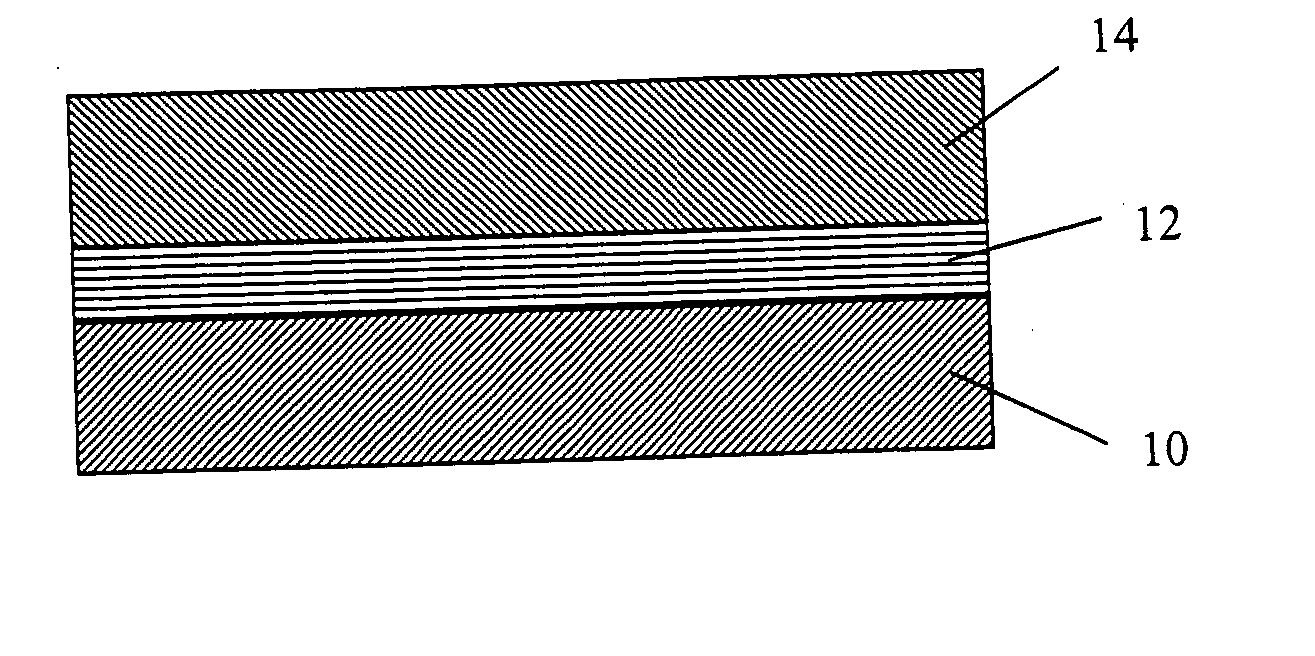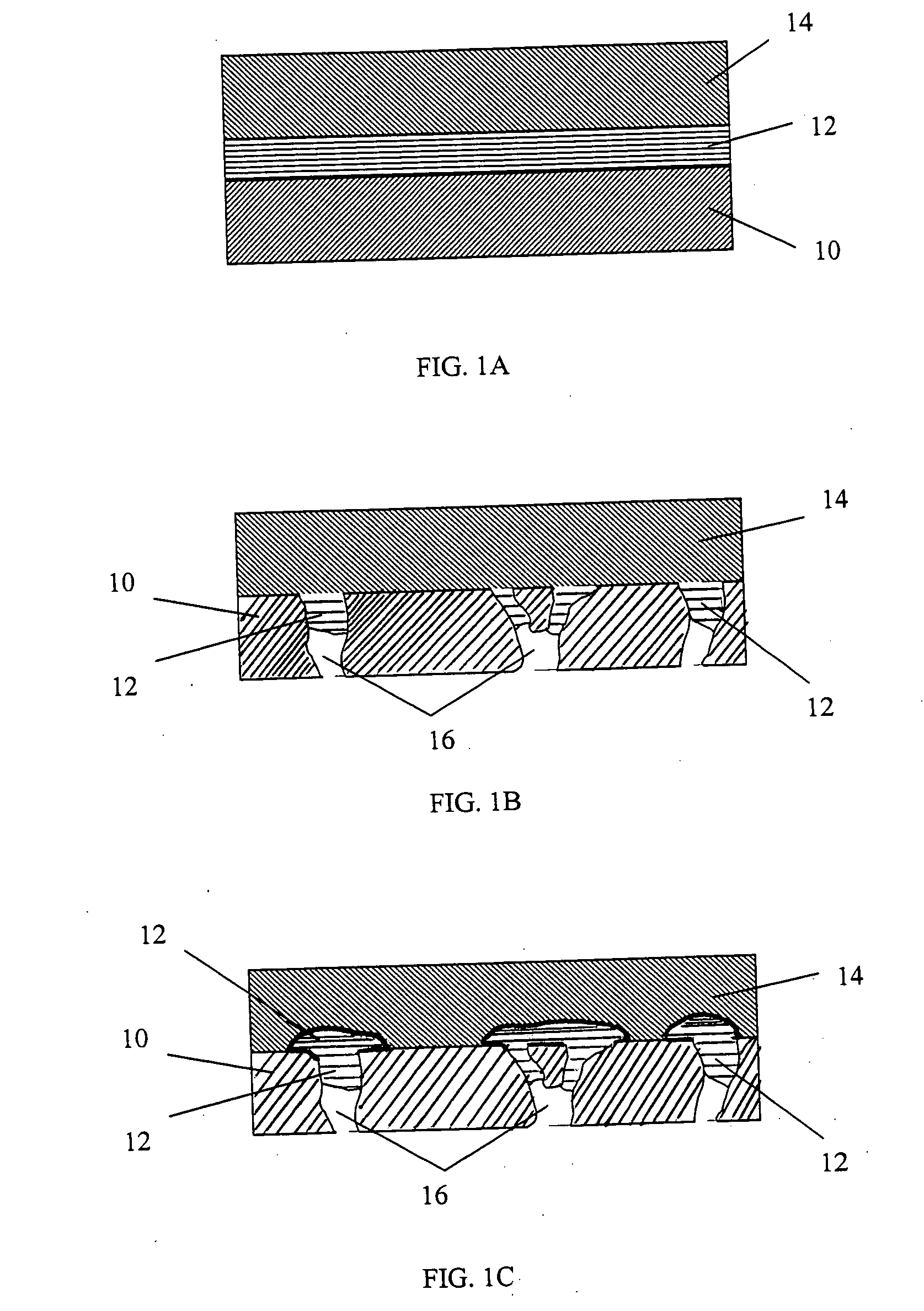Composite gas separation modules having a layer of particles with a uniform binder metal distribution
- Summary
- Abstract
- Description
- Claims
- Application Information
AI Technical Summary
Benefits of technology
Problems solved by technology
Method used
Image
Examples
example 1
[0112] This example describes the fabrication of a composite structure having a dense hydrogen-selective membrane, an intermediate layer that included a preactivated aluminum oxide (Al2O3) powder and a palladium binder, and a nominal 0.1 media grade porous 316L stainless steel (“PSS”) support.
[0113] A 2.5 inch (6.35 centimeter (cm)) long, 0.5 inch (1.27 cm) outside diameter (O.D.) section of PSS tube, welded to a section of non-porous 316L stainless steel tube on one end and a non-porous cap on the other end, was obtained from Mott Metallurgical Corporation. Contaminants were removed by cleaning the tube in an ultrasonic bath with alkaline solution at 60° C. for one hour. Tap water was flushed on both the inside and the outside of the tube for 5 hours to remove all the alkaline solution from the PSS pore system. The tube was then washed with distilled water 2 or 3 times in an ultrasonic bath (10 minutes each wash). Finally, the tube was rinsed with acetone for 10 minutes. The suppo...
example 2
[0120] This example describes the fabrication of a composite structure having a dense hydrogen-selective membrane, an intermediate layer that included preactivated aluminum oxide (Al2O3) powders and a palladium binder, and a nominal 0.1 media grade porous 316L stainless steel (“PSS”) support.
[0121] A 2.5 inch (6.35 cm) long, 0.5 inch (1.27 cm) O.D. section of PSS tube, welded to a section of non-porous 316L stainless steel tube on one end and a non-porous cap on the other end, was obtained from Mott Metallurgical Corporation. The support was cleaned and dried following the same procedure described in Example 1. The support was then oxidized at 500° C. in air for 10 hours.
[0122] Three different mixtures of powders were prepared as described below.
[0123] Powder Mixture 1 included 65 wt % Al2O3 with an average particle size of 1 micron (Alfa Aesar); 30 wt % Al2O3 with an average particle size of 5 microns (Buehler, Ltd.), and 5 wt % Al2O3 with an average particle size of 3 microns (...
example 3
[0130] This example describes the fabrication of a composite structure having a dense hydrogen-selective membrane, an intermediate layer that included preactivated aluminum oxide (Al2O3) powders and a palladium binder, and a nominal 0.1 media grade porous HASTELLOY® C-22® support. (HASTELLOY® C-22® is a nickel-chromium-molybdenum-iron-tungsten alloy.)
[0131] A 6 inch (15.24 cm) long, 1 inch (2.54 cm) O.D. section of HASTELLOY® tube, welded to a section of non-porous 316L stainless steel tube on one end and a non-porous cap on the other end, was obtained from Mott Metallurgical Corporation. The support was cleaned and dried following the same procedure described in Example 1. The support was then oxidized at 700° C. in air for 12 hours. A graded support was then produced using the same procedures and the same alumina powder mixtures as described in Example 2.
[0132] The graded support was then surface activated by performing two times the surface activation cycle described in Example...
PUM
| Property | Measurement | Unit |
|---|---|---|
| Temperature | aaaaa | aaaaa |
| Temperature | aaaaa | aaaaa |
| Time | aaaaa | aaaaa |
Abstract
Description
Claims
Application Information
 Login to View More
Login to View More - R&D
- Intellectual Property
- Life Sciences
- Materials
- Tech Scout
- Unparalleled Data Quality
- Higher Quality Content
- 60% Fewer Hallucinations
Browse by: Latest US Patents, China's latest patents, Technical Efficacy Thesaurus, Application Domain, Technology Topic, Popular Technical Reports.
© 2025 PatSnap. All rights reserved.Legal|Privacy policy|Modern Slavery Act Transparency Statement|Sitemap|About US| Contact US: help@patsnap.com



